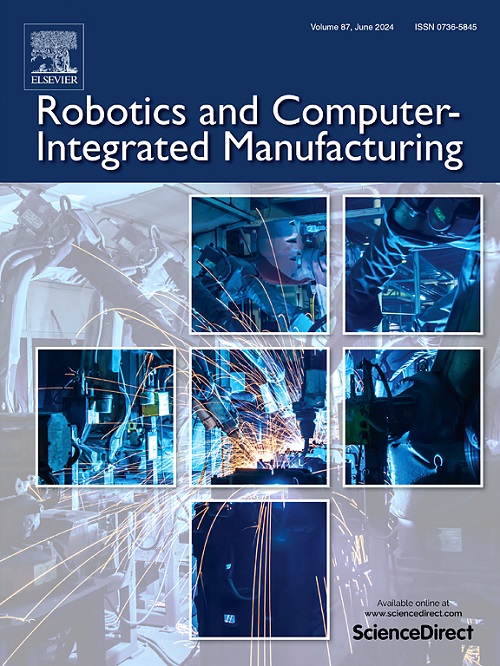基于OPC UA的线弧增材制造数字双生结构
IF 9.1
1区 计算机科学
Q1 COMPUTER SCIENCE, INTERDISCIPLINARY APPLICATIONS
引用次数: 0
摘要
本文提出了一种基于数字孪生(DT)的线弧增材制造(WAAM)体系结构,利用开放平台通信统一架构(OPC UA)增强通信、安全性和实时控制。DT在企业管理和个人资产规模上进行了探索,为流程优化提供了一个全面的框架。该架构集成了先进的3D可视化、使用卷积神经网络(cnn)的实时缺陷预测和结构化数据管理。一个涉及6自由度(DOF)工业机械臂的实际案例研究演示了该架构在WAAM沉积场景中的应用。评估了该体系结构的有效性,重点关注异常检测、关节角度精度和通信可靠性,突出了计算机视觉和基于云的数据存储的集成。结果表明在缺陷检测、过程监控以及物理实体和DT之间的实时交互方面有了显著的改进,强调了所提出的DT体系结构的潜力。本文章由计算机程序翻译,如有差异,请以英文原文为准。
Digital twin-based architecture for wire arc additive manufacturing using OPC UA
This paper presents a digital twin (DT)-based architecture for wire arc additive manufacturing (WAAM) utilizing Open Platform Communications Unified Architecture (OPC UA) for enhanced communication, security, and real-time control. DT is explored at both enterprise management and individual asset scales, providing a comprehensive framework for process optimization. The proposed architecture integrates advanced 3D visualization, real-time defect prediction using convolutional neural networks (CNNs), and structured data management. A practical case study involving a 6-degree-of-freedom (DOF) industrial robotic arm demonstrates the application of the architecture in a WAAM deposition scenario. The architecture's effectiveness is evaluated, focusing on anomaly detection, joint angle accuracy, and communication reliability, highlighting the integration of computer vision and cloud-based data storage. The results indicate significant improvements in defect detection, process monitoring, and real-time interaction between the physical entity and the DT, underscoring the potential of the proposed DT architecture.
求助全文
通过发布文献求助,成功后即可免费获取论文全文。
去求助
来源期刊
CiteScore
24.10
自引率
13.50%
发文量
160
审稿时长
50 days
期刊介绍:
The journal, Robotics and Computer-Integrated Manufacturing, focuses on sharing research applications that contribute to the development of new or enhanced robotics, manufacturing technologies, and innovative manufacturing strategies that are relevant to industry. Papers that combine theory and experimental validation are preferred, while review papers on current robotics and manufacturing issues are also considered. However, papers on traditional machining processes, modeling and simulation, supply chain management, and resource optimization are generally not within the scope of the journal, as there are more appropriate journals for these topics. Similarly, papers that are overly theoretical or mathematical will be directed to other suitable journals. The journal welcomes original papers in areas such as industrial robotics, human-robot collaboration in manufacturing, cloud-based manufacturing, cyber-physical production systems, big data analytics in manufacturing, smart mechatronics, machine learning, adaptive and sustainable manufacturing, and other fields involving unique manufacturing technologies.

 求助内容:
求助内容: 应助结果提醒方式:
应助结果提醒方式:


